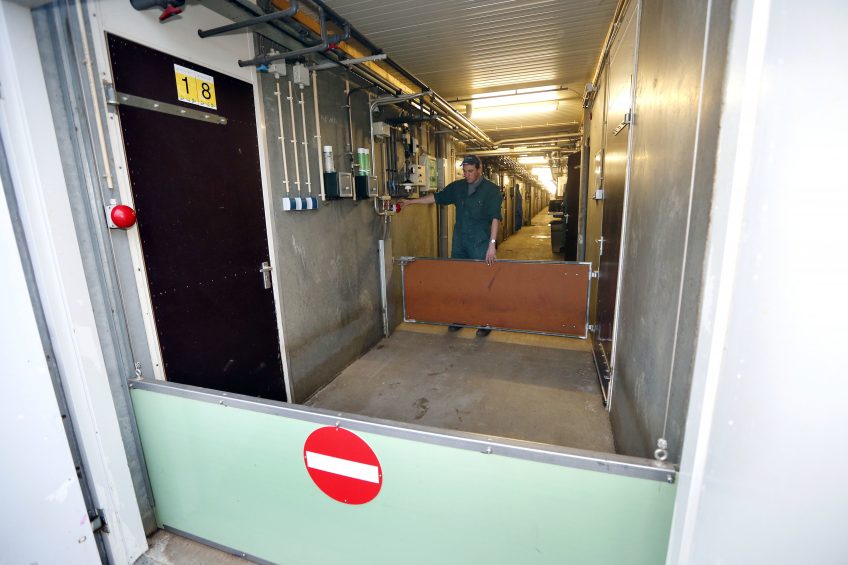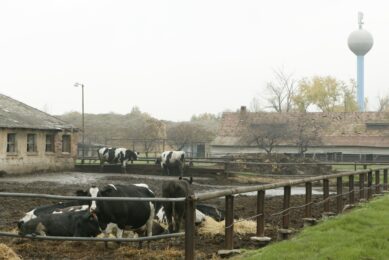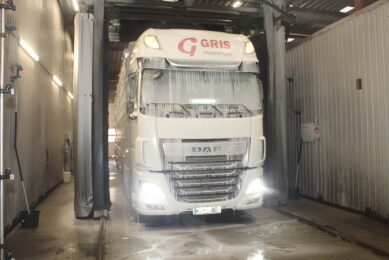Improving biosecurity and pig flow management

The importance of biosecurity does not need any further introduction. Awareness of pathogens and how they can get into farms greatly enhances proper management. Tools and apps can certainly help increase that awareness on-farm.
High level biosecurity is a must, not only for farms located in pig-dense areas with high infection pressure, but for all farms because they constantly receive, and deliver biological material (i.e. animals and feed). A lot of research projects have been dedicated to demonstrate how viruses, for example PRRS virus, are shed from pigs, and transmitted between farms. This has led to a common understanding of the critical importance of good external biosecurity, to avoid introduction of new viruses, with a high focus on clean transports, separate and clean load out areas, downtime for visitors etc.
When it comes to internal biosecurity, and especially management and pig flow, the implementation of preventive measures is also necessary. As it is difficult to change the location of a farm, internal biosecurity, pig flow and management become even more crucial, in order to prevent internal transmission of pathogens like PRRS.
Several abstracts at 2 recent congresses (ESPHM in Barcelona, Spain and IPVS in Chongqing, China) have revealed that basically the same high risk areas are facing pig producers all over the globe.
A new app to help
‘Combat’ (an acronym for ‘Comprehensive Online Management and Biosecurity Assessment Tool’) is a new app developed by Boehringer Ingelheim Vetmedica. Its intention is to help farmers and veterinarians to score and improve levels of biosecurity, pig flow and management procedures and benchmarking against other farms, as well as guiding farmers, veterinarians and other advisors to address high risk procedures and prioritise improvements. An example of the app can be seen in Figure 1.
Figure 1 – ‘COMBAT’ visualisation, a 4-dimension circle chart, indicating the internal risks (X-axis), external risks (Y-axis), risks related to location (circle colour) and the quality of management and pig flow (size of circle).

The relative risk is based on 55 questions divided in 4 categories:
- Internal risks;
- External risks;
- Location risk; and
- Management and pig flow.
Feedback is given on each category and categorised as very high, high, medium and low risk, to facilitate discussion of behaviours and prioritise fields of importance. This article contains some of the key findings from over 1,000 completed surveys related to the tool worldwide.
Disease status of neighbouring farms
Pig production tends to cluster in certain areas or regions. This increases the risk of area spread of diseases. Therefore, the knowledge of the disease status of neighbouring farms located in the same area becomes crucial in order to take necessary precautions. Surprisingly, the surveys revealed that more than 70% of the questionnaires found that the status of nearest neighbouring farm is either PRRS unstable or unknown (Figure 2).
Figure 2 – Percentage of very high risk answers, given to question1 and 5 in ‘Location risk’ category.

This high risk of area spread of course increases the demand for a high level of external biosecurity. This survey reveal, that globally a lot farms are at extremely high risk to introduce PRRSv by animals and persons. Often farms pay little attention to flow and cleaning of vehicles between PRRS negative and positive farm. This goes for vehicles for animal and feed transportation as well as pick up of dead animals. Furthermore, in 50% of cases, visitors and truck drivers can access the farm directly without restrictions (see Figure 3).
Figure 3 – Percentage of very high risk answers given to question 6, 7, 8 and 11 in ‘external risk’ category.

When a disease like PRRS has entered a farm it is important to avoid the spread of the disease between the different areas of production and reduce the infection pressure. The internal biosecurity questions in the ‘Combat’ app showed that in more than 50% of farms, persons, clothes and boots are being moved unrestricted between areas of production. Incoming gilts is another well-known source of PRRSv introduction into the sow herd. Still, in 67% of the farms, gilts were in contact with PRRSv infected animals before introduction. (Figure 4)
Figure 4 – Percentage of very high risk answers given to question 10, 11, 12 and 5 in ‘internal risk’ category.

If pigs or sows are at risk of being infected by PRRSv, they should be properly immunised by a PRRS modified live vaccine before this happens. It is a well-known fact, that PRRSv vaccination alone is not enough to control PRRSv in a herd.
To exploit the full potential of the vaccines and reach the goal of PRRS stability, the management and pig flow has to be optimal. Mixing of pigs of different ages is one of the most common reasons for continuous circulation of PRRSv in a herd. In the app there are 13 questions directly related to the ‘ten golden rules’ for PRRS management.
Keeping sick children at home
In the human world, every parent would know that keeping sick children at home would both ease the recovery and avoid spread of disease to the other children in school. Despite this basic knowledge about disease prevention and containment, we see in the caretaker’s management of diseased pigs, as well as busy parents with sick children, very high risks are taken in order to keep things going. This might explain why 77% of farms are holding pigs back for weaning quality, keep weaned pigs in farrowing room (58%), and allow some kind of continuous flow after weaning in 48% of farms. On top of that, 74% of herds carry out a risky introduction of gilts, without proper quarantine facilities and quarantine time.
The key benefit of scoring tools, are not the score in itself. The tool should facilitate behavioural changes that improve pig flow and management, by visualising the risky behaviours and the transmission patterns of pathogens. The evaluation of management procedures in the app is unique in both the details of evaluation and the feedback format that allows farmers, veterinarians and other advisors to address and prioritise high risk procedures and the way it visualises the score.
Figure 5 – Percentage of very high risk answers given to question6, 7, 8 and 12 in ‘management risk’ category. All questions in thecategory are linked to the ten golden management rules.

Understanding risky behaviours
It is important to mention that the differences between success and failure in risk reduction in biosecurity and management are not determined by the details in a scoring report. Improvements are only seen when mistakes and risky behaviours are understood and corrected.











